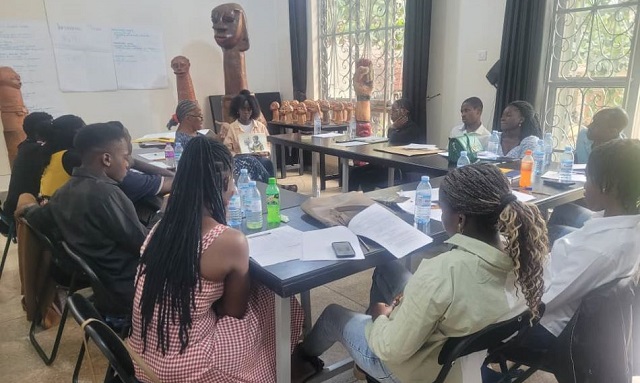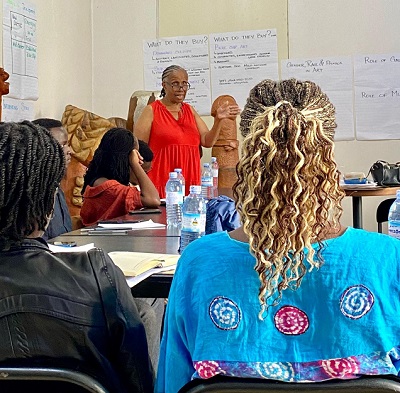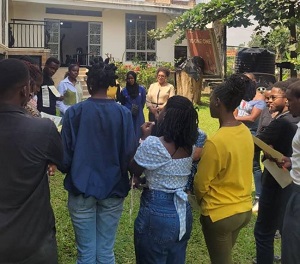
ART | DOMINIC MUWANGUZI | Aaron Wasala fresh from graduating from art school, began exhibiting his artwork in galleries around Kampala. This was not hard because naturally he had a good talent in painting that earned him a good reception among several gallerists. Years later, Wasala is still regarded as an upcoming artist selling his art at a few hundred dollars, yet some of his contemporaries are already making headlines selling thousands of dollars. So, what happened to Wasala? Despite his extraordinary abilities to make good art, the young artist was never lucky enough to find a good art patron who could usher him into the art market. The galleries where he sold his art exploited him and turned him into a surviving artist. Today, if he doesn’t have an exhibition, he can find it very difficult to survive and as a result he has resigned himself to selling his art for peanuts to make ends meet.
This is a common scenario among many young artists as they leave university to join the art industry. Because they have no idea of what the art market is like, they end up at the deep end of the art market. Today, perhaps more than ever, because of the heavily commercialized art world, it really does matter for every artist to understand how the business of art works. “It is important that a young artist learns the business of art before they begin to practice professionally. This helps them to navigate successfully in the industry because no one wants to be a surviving artist,” says Professor Diana Tyson who’s facilitating a workshop the Business of Art to fresh art graduates of Margaret Trowel School industrial and Fine Art Makerere, which falls under College of Engineering Design Art and Technology (CEDAT).

Through the workshop, the professor with a vast experience in Business teaching and now art collector, provides valuable knowledge and skills to the participants on how they can steer through the art market. She emphasizes how the business of art, like art itself, is exclusive to a specific group of people and requires particular skills and exposure for one to emerge as successful. “Naturally, the way one sells water is not the way they sell a painting or sculpture,” she notes and elaborates further, “Water is a need which one can’t live without and yet a painting is a want, which can be purchased after several considerations. Therefore, the artist needs to be mindful of this sharp contrast and apply the pull strategy on their client, which literally means making the potential buyer comfortable around the art,” she advises.
According to Prof Tyson once the client becomes comfortable around the art and artist, they’ve now established an emotional connection which often times can lead to a good relationship between the two parties. “The art buyer/ collector may find interest in the work and later buy it because of the way the artist related to them. Sometimes it’s not because they really love the artwork but because they feel guilty not supporting their new friend,” she notes.
While it is important to focus on the intricacies of how to sell the art, it is equally crucial for the young artist to create different avenues where they can sell considering the long-term and not short-term benefits. Tyson advises that group shows, art fairs, personal studios, public avenues and the internet are good platforms to sell art for a burgeoning artist. “A young artist should be careful not to sell through a gallery fast because it is profit oriented and has many bills to pay. All these expenses usually are transferred to the artist through percentage deductions in sales and framing if the work is to be framed,” remarks Tyson.

The forty percent charge by a gallery is risky for an artist who has barely found their right footing in the competitive art market. This expense can be dodged if the artist sells through their studio or public venues like Museums which operate profit free because they are funded by the local council. Similarly, art fairs are a perfect podium for the young artist to connect with art collectors who have the potential to support their career. “Art collectors are usually looking for new artists to invest in their money. When they buy a young artist’s work, they do it as a form of investment knowing so well that years later their price will triple or quadruple in the secondary market”, explains the experienced art collector.
With a global competitive art market and now focus turned onto the Africa Contemporary art scene, it is appropriate for young artists to get exposed to the business of art. This annual workshop, now in its second year, is helpful in equipping the Ugandan burgeoning artists with knowledge and skills in navigating the delicate art market. Perhaps, such classes can be the beginning of a conversation on how art institutions like Makerere University art school can incorporate such a practical discipline into one of the course units for finalist students to avert possibilities of their exploitation as they step into the industry.
*****
The workshop was organized and coordinated by Dr. Ritah Nabuyungo Edopu- Head Department of Fine Art and Dr Lilian Nabulime a lecturer at Margaret Trowel School of Industrial and Fine art, Makerere University. Upon completion of the workshop the graduates were provided with an opportunity to hold a series of group international exhibitions in New Jersey, USA later this year.
 The Independent Uganda: You get the Truth we Pay the Price
The Independent Uganda: You get the Truth we Pay the Price



